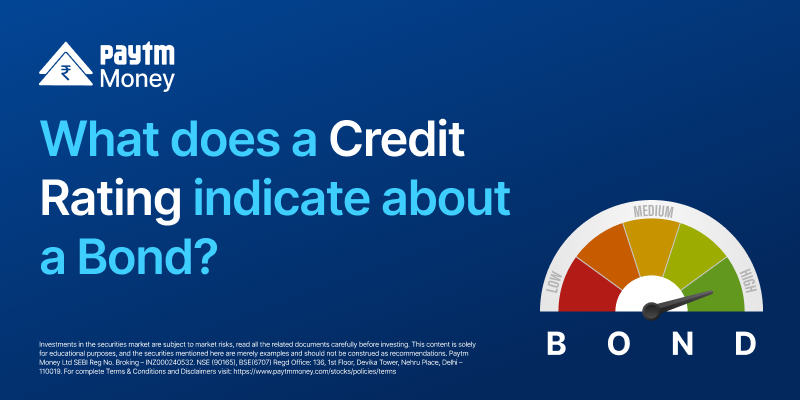Hits and Misses of 2022-23 budget6 min read
The countdown to the release of the Union Budget for FY2023–24 has started, and as usual, every household, business owner, worker, investor, and farmer has begun speculating about the budget’s “must-haves.” But before that, it is important to see where we are today based on the estimates shared by the government in the last union budget.
A Sneak Peek Into Last Union Budget
The union budget 2022-23 was presented against the backdrop of economic activity returning to the pre-pandemic level. An emerging country like India cannot afford to lose two years of valuable time. There were signs of the economy slowing down before the outbreak. Thus, the budget was presented to encourage economic growth and uphold financial stability.
One of the key highlights of the previous budget was the strong growth orientation adopted at the micro level to supplement macroeconomic growth. As the economy was emerging from the COVID pandemic, the budget included an increase in capex of 35.4% for FY2022-23.
It was a budget that was presented with the “Amrit Kaal” vision, which aimed for an economy that would grow at a 9.2% annual rate between 2022 and 2023. However, as per the Statistics Ministry’s estimate on Jan 06, 2023, India’s GDP growth is estimated to grow at 7% in FY23 owing to hyperinflation induced by the Russia-Ukraine war.
The previous budget had four priorities:
- PM “Gati Shakti” where govt plans to invest ₹100 + lakh crores.
- Inclusive development
- Productivity enhancement and investment, sunrise opportunities, energy transition and climate action
- Financing of investments
1. PM Gati Shakti Plan
The seven engines that would power the “PM Gati Shakti” plan are roads, railways, airports, ports, mass transit, waterways, and logistic transport.
- National highways to be expanded by 25000 km in 2022-23
- ₹20,000 crores allocated for National highway network expansion.
- 400 new Vande Bharat trains are to be manufactured in the next 3 years.
- 100 PM Gatishakti cargo terminals to be developed in the next 3 years through a Public-private partnership (PPP) model.
2. The major announcements made under inclusive development are-
- 1.63 crore farmers will be made direct payments of ₹.2.37 crores for procuring wheat and paddy.
- Ken-Betwa rivers unification project
- Kisan drones in the agriculture sector
- Emergency Credit Linked Guarantee scheme (ECLGS) to be provided to 130 lakhs MSMEs.
- 80 lakh houses will be built under Housing for All scheme
- E-Passport, urban planning, and land record management are some of the priorities under inclusive development
To be honest, not everything announced during the budget could be completed in a year, but some serious steps have been taken on all fronts, like direct payment transfer to farmers, the Ken-Betwa river-unification project in UP and MP, a specific policy on drone technology, and the extension of PMAY to push urban and rural housing development.
3. Productivity enhancement and investment
- Promoting sunrise industry, energy transition and climate action
- Scheme for design-led manufacturing for 5G as a part of the PLI scheme
- Under Atmanirbhar Bharat, 68% of the capital procurement budget for the defence was earmarked for domestic industries, up from 58% in 21-22
- Promoting R&D in defence sector.
The government planned to promote and fund sunrise industries such as artificial intelligence, geospatial systems and drones, semiconductors, space economy, genomics and pharmaceuticals, green energy, and clean mobility systems as part of the sunrise industry. For the production of high-efficiency solar modules, ₹19,500 crores were allocated for PLI schemes.
4. Financing of investments
Public investment was one of this budget’s key initiatives to boost demand and prime private investment in 2022–23. In 2022–23, capital expenditures increased significantly by 35.4% to ₹7.5 lakh crores from ₹5.54 lakh crores in 2021–20.
- Total budget expenditure for 2022-23 was estimated at Rs.39.45 lakh crores
- Total receipt excluding borrowing is planned at Rs.22.84 lakh crores
- Fiscal deficit for 2022-23 was estimated at 6.4% of GDP
The govt is on its way to achieving the set fiscal deficit target of 6.4% of GDP for the current year.
Hits and Misses of Union Budget 2022-23
The budget for 2022 was presented against the backdrop of economic recovery post-Covid pandemic, but no one expected the Russia-Ukraine conflict and its subsequent impact on the global economy.
HITS:
- Budget 2022-23 projected a fiscal deficit of 6.4%, which the government appears to be on track to meet. The primary reason is that the government is on track to meet or exceed the targeted direct tax collection of ₹14.20 lakh crores.
- GST collection during the April- December 2022 period was ₹13,40,426 crores.
- Additionally, it appears that the government will meet its ambitious capex goal of ₹ 7.5 lakh crores this year.
- A pilot program for the introduction of sovereign digital currency has already been started by the RBI.
- Govt successfully managed the 5G spectrum auction.
MISSES:
- The 2022-23 budget targeted a growth rate of 9.2%, while the RBI’s latest monetary policy forecasts a rate of 6.8%. Given the global economic slowdown, recessionary headwinds, and monetary tightening, 9.2% seems unattainable this year. Nevertheless, India is likely to remain the fastest-growing economy in the world.
- Few sectors have begun disbursements out of the 14 identified for PLI schemes.
- Another miss is the replacement of the SEZ act with the DESH bill, which is yet to see the light of day.
- The government is also likely to miss its 2022-23 budget spending target of ₹39.44 billion due to higher-than-planned spending on the free food scheme, fertilizer subsidies, and a high import bill.
- The government also appears to have fallen short of its ₹65,000 crore divestment target. And so far, only ₹31,106 crores have been achieved relative to this goal.
- Additionally, the government was unable to pass the banking amendment bill that would have allowed for bank privatization. The goal of privatizing two PSU banks was not achieved.
- Govt also failed to move in the direction of converging old and new direct tax regimes.
- Reforms in agriculture for farmers to find better prices for their produce have also been unsuccessful.
Despite the geopolitical headwinds caused by inflation brought on by the Ukraine-Russia war, the government generally did a good job managing the economy. The PLI scheme, which aimed to lessen import dependency in important sectors, changed the game, and the government executed it well. Government action on divestment is anticipated, as it has already demonstrated its intent by selling its stakes in LIC and Air India.
The government’s efforts to enact structural reforms will be closely observed. The market anticipates a blockbuster budget this time because it will be the final full budget before the following general election, which will give the economy a major boost. Infrastructure, PSUs, and capital goods are a few sectors that may get a lot of attention in this budget.
Disclaimer: Investments in the securities market are subject to market risks, read all the related documents carefully before investing. This content is purely educational and for investor awareness purposes only, it is in no way to be considered as advice or recommendation. Paytm Money Ltd SEBI Reg. No. INA100009859, BSE STAR MF Member ID – 53873. Regd office: 136, 1st Floor, Devika Tower, Nehru Place, Delhi – 110019.



